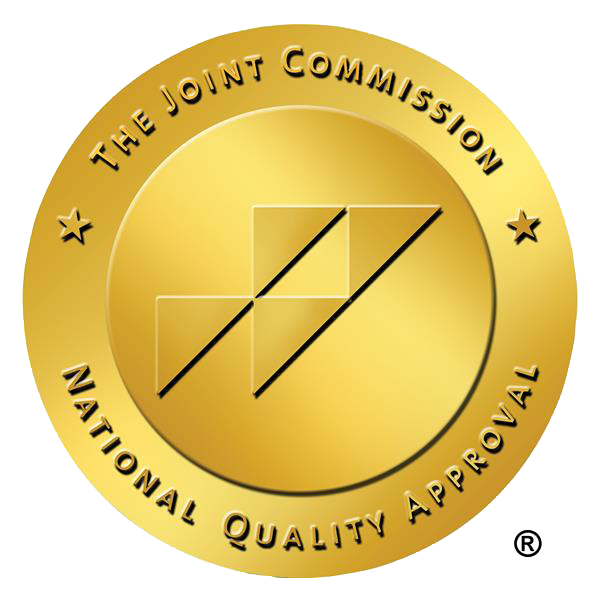Key Takeaways
- Women experience higher prevalence rates of anxiety disorders due to hormonal fluctuations, societal pressures, and biological factors, necessitating targeted management strategies.
- Common symptoms of anxiety in women include both physical manifestations, such as rapid heart rate and muscle tension, and psychological symptoms like excessive worry and constant fear.
- Effective treatments for anxiety in women encompass Cognitive Behavioral Therapy (CBT), medication management with SSRIs, and holistic approaches such as mindfulness and yoga.
-
Understanding Anxiety in Women
Anxiety disorders significantly impact women’s lives, with a higher lifetime prevalence rate compared to men. Various factors contribute to this disparity, including hormonal changes, societal pressures, and biological influences. Understanding these factors helps in crafting effective strategies to manage anxiety disorders.
Hormonal fluctuations during key life stages such as puberty, pregnancy, and menopause can exacerbate anxiety symptoms. Societal expectations often place additional stress on women, requiring them to balance professional and personal responsibilities. Additionally, genetic and family history also play a significant role in the development of anxiety disorders.
Recognizing the unique challenges women face is key to addressing anxiety disorders effectively. Acknowledging these factors allows for the development of targeted approaches to help women manage their anxiety and enhance their overall well-being.
Hormonal Fluctuations
Hormonal changes during significant life stages such as puberty, menstruation, pregnancy, postpartum, and menopause can trigger anxiety symptoms in women. During puberty, hormonal cycling induces fluctuations of hormones such as estrogen and progesterone, potentially increasing vulnerability to anxiety disorders. Factors like body changes, peer pressure, and academic stress further contribute to anxiety in young women.
Pregnancy and the postpartum period are also critical times when hormonal changes can lead to increased anxiety. Prenatal anxiety, influenced by both hormonal shifts and physical and emotional stressors, is common during pregnancy. Postpartum anxiety affects approximately 20.2% of new mothers within the first year after giving birth, with hormonal changes playing a significant role.
Menopause is another stage where hormonal fluctuations can exacerbate anxiety, particularly when accompanied by physical symptoms like insomnia and hot flushes. Comprehending the impact of hormonal changes on anxiety is key to developing effective treatment strategies for women.
Societal Pressures
Modern societal expectations place significant demands on women, often requiring them to balance professional responsibilities with family and household duties. This constant juggling act can lead to elevated stress levels and heightened anxiety symptoms. Women are often expected to successfully manage both work and home responsibilities, which can create a significant amount of pressure.
The need to meet these societal expectations can lead to chronic stress and anxiety. The pressure to excel in multiple roles can exacerbate feelings of inadequacy and contribute to the development of anxiety disorders. Recognizing these societal pressures is important for addressing and managing anxiety in women.
Biological Factors
Genetic factors and family history significantly influence the likelihood of developing anxiety disorders in women. Women with a family history of anxiety are at a higher risk of developing anxiety disorders themselves. These genetic predispositions can impact a woman’s overall mental health landscape, making it essential to consider these factors when understanding anxiety.
Biological factors such as genetic predispositions and family history play a critical role in the development of anxiety disorders and their associated risk factors. Recognizing these influences allows for tailoring effective strategies to manage anxiety in women, considering their unique mental health landscape.
Common Symptoms of Anxiety in Women
Anxiety symptoms in women can manifest in various ways, impacting both their physical and psychological well-being. Common symptoms include feelings of nervousness or restlessness, tension, and excessive worry. Recognizing these symptoms is important for identifying and addressing anxiety disorders effectively.
Physical symptoms of anxiety can include:
- Rapid heart rate
- Shortness of breath
- Gastrointestinal issues
- Muscle tension
- Fatigue
These symptoms can significantly impact a woman’s daily life, making it challenging to carry out routine activities. Identifying these physical manifestations is vital for managing anxiety effectively.
Psychological symptoms of anxiety are equally debilitating. They can include excessive worry, difficulty concentrating, and constant fear. These symptoms can interfere with a woman’s ability to focus on daily tasks and excessive anxiety interferes with significant distress and impairment. Recognizing these psychological symptoms is key to developing effective treatment strategies.
Physical Symptoms
Anxiety can lead to a range of physical responses, including increased heart rate, rapid breathing, and excessive sweating. These physical symptoms can be distressing and interfere with daily life. Many individuals may feel anxious, and gastrointestinal issues such as nausea, indigestion, bloating, upset stomach, and irritable bowel syndrome (IBS) are also common among women with anxiety.
Muscle tension and fatigue are frequently reported by women with Generalized Anxiety Disorder (GAD). These physical symptoms can be debilitating, affecting a woman’s overall well-being. Recognizing and addressing these physical manifestations is crucial for managing anxiety effectively.
Psychological Symptoms
Excessive worry is a predominant psychological symptom experienced by women with anxiety disorder. This constant worry can affect their ability to focus on daily tasks and lead to significant distress, often resulting in unrealistic worry. Difficulty concentrating or focusing on tasks is another common symptom among women with anxiety, including excessive anxiety.
Constant fear is a pervasive symptom that can lead to significant distress and impairment in women dealing with anxiety. These psychological symptoms can interfere with a woman’s daily life and contribute to the development of anxiety disorders, often accompanied by intense fear, severe anxiety, anxious thoughts, including specific phobias, and strong fear.
Understanding these symptoms is essential for developing effective treatment strategies.
Major Types of Anxiety Disorders in Women
Women experience a higher prevalence of anxiety disorders compared to men, with distinct patterns emerging during specific hormonal transitions. The major types of anxiety disorders that affect women include Generalized Anxiety Disorder (GAD), Panic Disorder, and Social Anxiety Disorder.
The anxiety disorders described include:
- Generalized Anxiety Disorder (GAD): characterized by excessive worry and physical symptoms such as fatigue and muscle tension. This is one of the most common mental disorders that can trigger anxiety disorders and other anxiety disorders diagnosed.
- Panic Disorder: involves sudden panic attacks and a constant sense of impending doom.
- Social Anxiety Disorder: severely impairs women’s ability to engage in daily social interactions due to fear of judgment. Common mental disorders can significantly impact daily life.
Recognizing these different types of anxiety disorders is vital for developing effective treatment strategies. Each disorder has distinct traits and impacts on women, requiring tailored approaches for management.
Generalized Anxiety Disorder (GAD)
The lifetime prevalence of Generalized Anxiety Disorder (GAD) among women is about 6%. Women with GAD commonly experience symptoms such as fatigue, muscle tension, and gastrointestinal issues. These symptoms can significantly impact a woman’s daily life, making it essential to address GAD effectively.
Panic Disorder
Panic Disorder occurs at least twice as high in women compared to men. Individuals with panic disorders may experience a constant sense of impending doom or panic attack. This increased anxiety sensitivity is defined by catastrophic interpretations of bodily sensations.
Social Anxiety Disorder
Social Anxiety Disorder can severely impair women’s ability to engage in daily social interactions due to fear of judgment. Women often experience social anxiety symptoms related to performance, such as fear of scrutiny while eating or drinking in public.
Recognizing these symptoms is important for addressing social anxiety disorder effectively.







